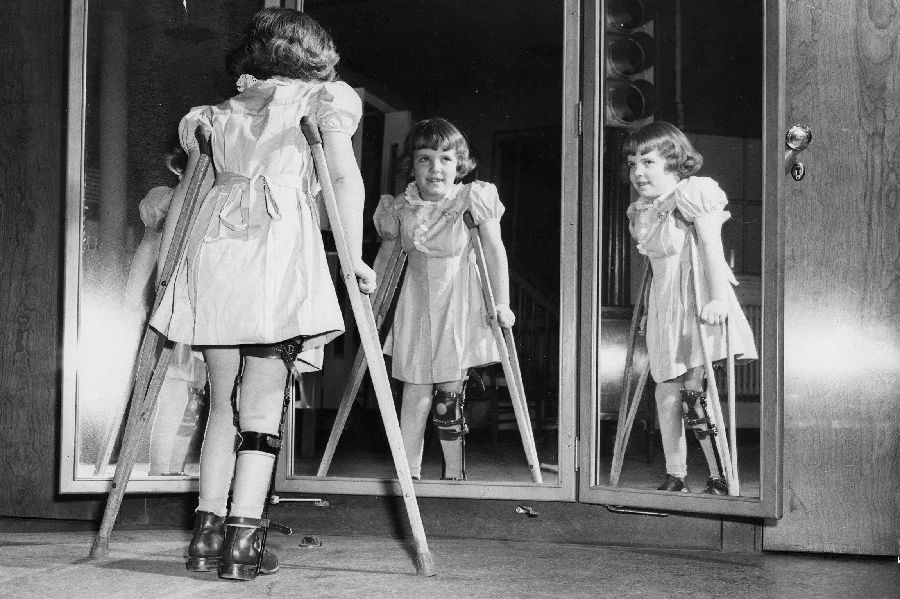In Kolmer's case, the vaccine involved using a weakened poliovirus,
科爾默的疫苗是用不會引發脊髓灰質炎癥狀,
one that wouldn't cause symptoms but would still confer immunity.
但依然能激活身體的免疫系統的脊髓灰質炎病毒制成的減毒活疫苗。
In the case of Park and Brodie, the technique involved a killed virus that would work more or less the same way.
帕克和布羅迪利用的則是已經被殺死的,但工作方式與科爾默的病毒大致相同的病毒。
Nine thousand children were injected with the Park-Brodie vaccine that summer, and 10,000 with Kolmer's version.
那年夏天,9000名兒童注射了帕克-布羅迪疫苗,另有1萬名兒童注射科爾默版本。
Both were disasters, in some cases causing the very polio they were intended to prevent,
結果,兩人的方案雙雙變成了災難,部分兒童注射疫苗后不僅沒能免疫,反而染上了脊髓灰質炎,
in others leading to infections and inflammations.
一些兒童出現了感染、炎癥等癥狀。
Six children died of vaccine-caused polio.
還有六名兒童因為疫苗染上了脊髓灰質炎最后不治而亡。
In November, Kolmer and Brodie were summoned to the annual meeting
同年11月,科爾默和布羅迪兩人被傳喚到了美國公共衛生協會的年會上,
of the American Public Health Association for an open shaming delivered in twin reports,
并以兩份報告的形式對他們進行了公開的聲討,
one of which ended with the damning conclusion that Kolmer might as well be guilty of murder.
其中一份報告甚至在結尾表示,應該判科爾默謀殺罪。
“Gentlemen,” Kolmer said in response, “this is one time I wish the floor would open up and swallow me.”
“先生們,”科爾默回應說,“我真的恨不得找個地縫鉆進去。”
It would be another 20 years, until 1955, before Dr. Jonas Salk would develop a successful killed-virus vaccine.
又過了20年,也即到了1955年,真正有效的滅活疫苗才被喬納斯·索爾克醫生研制出來。
That meant 39 years between the epidemic of 1916 and the moment when science would at last have its way with the disease.
這就意味著科學最終攻克這種疾病的那一刻距離1916年疫情爆發已有39年。

Americans in lockdown now might seem almost spoiled
相比之下,現在正在經歷封城和隔離,
to be chafing at being told to wait up to 18 months before a vaccine against SARS-CoV-2 becomes available
被告知18個月后才能拿到SARS-CoV-2疫苗時還嫌不夠快的美國人未免矯情了些
(though optimistic projections suggest that the breakthrough could come as early as January).
(盡管樂觀的預測表明,疫苗研制工作最早來年1月份就能取得突破)。
But as science changes, expectations do too.
不過,科學在發展,人們的期望值也在變。
We can now make vaccines faster than ever.
如今的疫苗研制速度比以往任何時候都快。
Still, some things remain the same.
但有些東西還是沒變。
Americans separated by scourges more than a century apart share the same fear,
一個多世紀前的美國人經歷的恐懼,擔憂,隔離的孤獨之感以及親人被疫情奪走的悲痛,
the same worry, the same loneliness in lockdown and grief for lost loved ones.
今天的美國人一個都沒落下。
Diseases don't change their character, and human beings don't much either.
疾病的性格不會變,人的性格又能變到哪里去?
But science presses ahead, and in our impatient 21st century,
好在,在這個浮躁的21世紀,科學總在向前,
that's something for which we should be deeply grateful.
我們應該為此充滿感激才是。
譯文由可可原創,僅供學習交流使用,未經許可請勿轉載。











